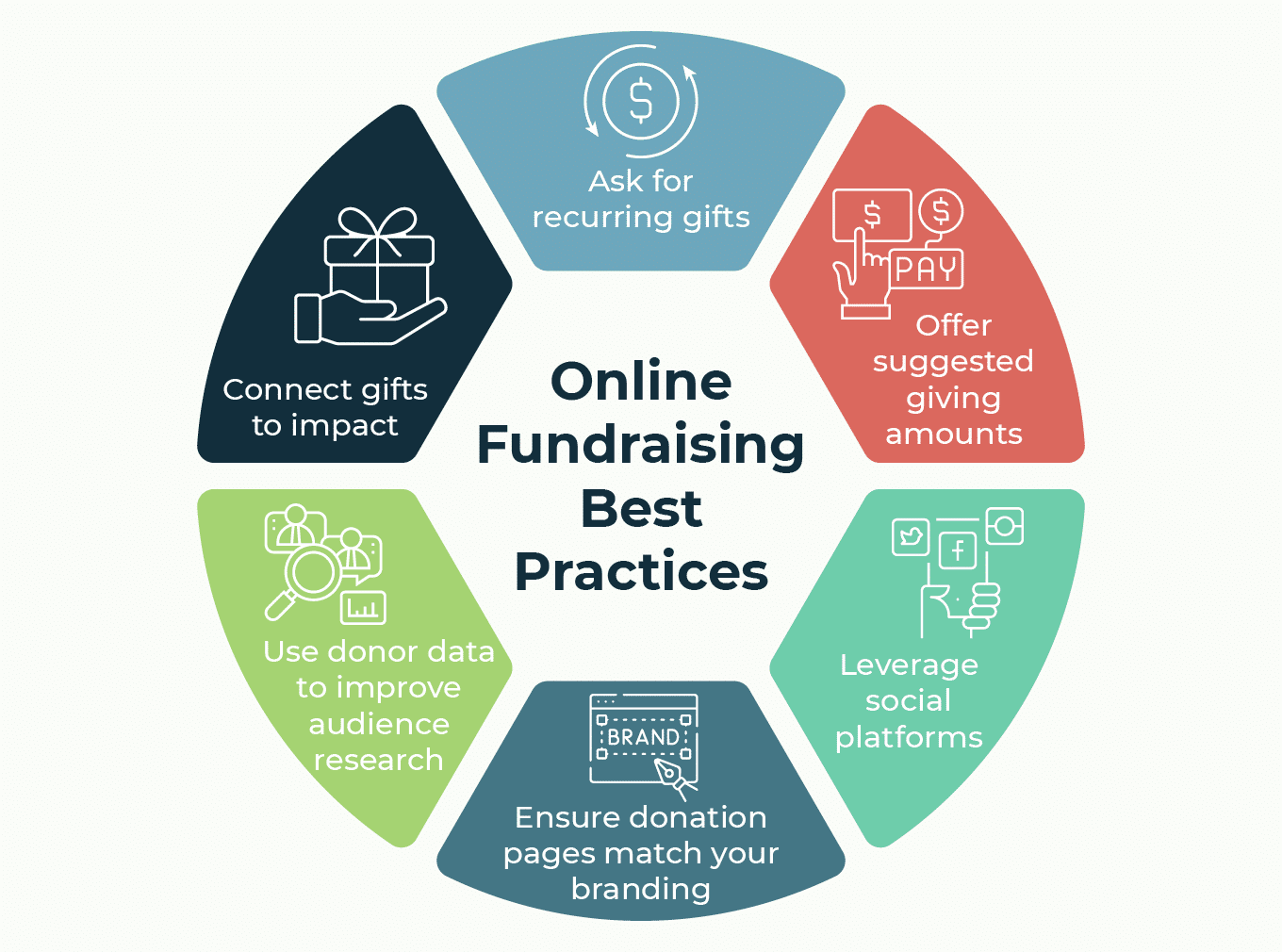Nonprofit Marketing: Approaches to Increase Awareness and Drive Donations
Wiki Article
The Function of Neighborhood Engagement in Nonprofit Fundraising: Building Lasting Relationships for Lasting Support
Neighborhood involvement is progressively identified as an important part of effective nonprofit fundraising. By promoting authentic connections with neighborhood stakeholders, organizations can cultivate trust fund and loyalty, which are essential for lasting assistance. Nevertheless, the techniques and approaches utilized to involve communities vary commonly, elevating vital inquiries concerning efficiency and effect. What are the most effective methods for growing these essential connections, and how can nonprofits gauge their success in this arena? Recognizing these characteristics might considerably influence the future of fundraising efforts and the overall mission of not-for-profit organizations.Recognizing Community Interaction
Neighborhood involvement is an essential element of effective nonprofit fundraising efforts. Nonprofits need to identify essential stakeholders-- such as community members, regional organizations, and other organizations-- to produce effective interaction strategies.Effective community involvement is based on energetic listening and responsiveness to the requirements and interests of the area. This procedure entails soliciting comments, comprehending neighborhood dynamics, and making certain that the organization's mission aligns with neighborhood top priorities. Involving the neighborhood can take different kinds, consisting of public conferences, volunteer possibilities, and partnership efforts, each created to motivate involvement and investment in the company's goals.
Moreover, community involvement ought to be approached as an ongoing dialogue rather than an one-time initiative. By cultivating a comprehensive atmosphere where community voices are listened to and valued, nonprofits can construct a strong structure for future fundraising undertakings. Ultimately, a deep understanding of community interaction empowers organizations to produce authentic connections that boost their overall efficiency and sustainability.
Advantages of Strong Relationships
Solid connections developed via community interaction return various advantages for nonprofit fundraising efforts. Primarily, these connections foster depend on and integrity, necessary components in encouraging benefactors to contribute. When potential supporters see a nonprofit proactively involved in their area, they are most likely to rely on its goal and effect.
Additionally, these connections facilitate efficient communication. Nonprofits can leverage their connections to share tales of impact, updates, and needs, guaranteeing that fans remain educated and engaged. This open line of communication not only reinforces bonds but additionally motivates referral promotion, increasing the not-for-profit's reach.
Lastly, strong neighborhood connections can bring in new partners and enrollers. People and organizations are much more likely to straighten with organizations that demonstrate purposeful community involvement, offering extra sources and support that can significantly improve fundraising capacities. Thus, cultivating robust relationships via neighborhood engagement is indispensable to a not-for-profit's long-lasting fundraising success.
Approaches for Efficient Interaction
Just how can nonprofits successfully engage their areas to boost fundraising efforts? Creating targeted methods is necessary for fostering purposeful connections. Initially, leveraging social media sites platforms enables companies to share their goal dynamically and interactively, reaching a more comprehensive audience. Normal updates, engaging web content, and calls-to-action can galvanize neighborhood passion and involvement.2nd, hosting area events, such as workshops, volunteer opportunities, or fundraising drives, assists in in person interaction, allowing nonprofits to showcase their impact and efforts. These occasions not only raise funds but likewise grow relationships and allow neighborhood participants to engage directly with the reason.
Third, applying customized interaction strategies can improve interaction. Customizing messages to particular benefactor segments based upon passions and previous contributions fosters a sense of belonging and investment in the company's mission.
Lastly, creating partnerships with regional businesses and community leaders can magnify outreach initiatives. Joint campaigns can boost visibility and trustworthiness, showing a cumulative dedication to the area's well-being. By integrating these strategies, nonprofits can build lasting connections that enhance fundraising efforts and drive lasting support.
Determining Involvement Success
While involving the community is crucial for successful nonprofit fundraising, determining the effectiveness of these interaction initiatives is just as crucial. Establishing clear metrics enables companies to assess exactly how well they are news getting in touch with their audience and achieving their fundraising goals. Key performance indications (KPIs) such as donor retention rates, volunteer involvement degrees, and engagement on social media sites systems provide substantial data for analysis.
Consistently assessing these metrics makes it possible for companies to pivot their approaches when necessary, guaranteeing that area involvement continues to be lined up with their general goal. Furthermore, sharing these outcomes with stakeholders promotes openness and constructs depend on, motivating additional community involvement. Inevitably, a durable dimension structure not just informs future fundraising campaigns however likewise enhances the relationship in between the not-for-profit and its supporters, laying the groundwork for sustainable success.
Study in Neighborhood Impact
Many case studies show the extensive influence that community involvement can carry not-for-profit fundraising success. One notable instance is the "Something to chew on" campaign, where a local food financial institution partnered with companies and colleges to host neighborhood dinners. These events not only elevated funds however also fostered a feeling of belonging among individuals, dramatically boosting donor retention rates.Another engaging situation is the "Green Spaces Job," which included regional residents in the revitalization of urban parks. This initiative not only amassed financial assistance from local businesses but also cultivated a volunteer base that added to ongoing maintenance and programming. The sense of possession and pride amongst community members converted right into continual payments.
In the realm of arts, the "Art for All" project successfully engaged local artists and clients to produce joint art installations, resulting in increased exposure and donations for a local arts nonprofit.
These examples highlight that when nonprofits focus on area involvement, they can develop lasting connections that boost fundraising initiatives, guaranteeing sustainable support and cultivating a vivid community society. Such instances demonstrate that neighborhood engagement is not simply a strategy but a vital pillar of not-for-profit success.
Final Thought
In verdict, area involvement is essential to the success of nonprofit fundraising consultant fundraising efforts. By cultivating solid connections with neighborhood stakeholders, organizations boost trust fund and reliability, leading to improved benefactor retention and commitment. Implementing efficient engagement approaches and determining helpful resources their effect guarantees that nonprofits can thrive and adapt. Inevitably, a robust foundation of area support not only magnifies fundraising potential yet likewise grows a society of partnership, important for accomplishing lasting organizational goals and sustaining significant influence.Nonprofits need to identify essential stakeholders-- such as neighborhood members, regional organizations, and various other companies-- to create efficient interaction strategies.

In final thought, community involvement is essential to the success of nonprofit fundraising efforts.
Report this wiki page